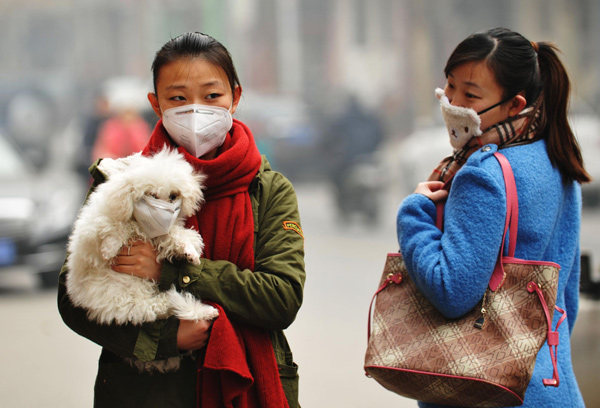 |
|
A woman (left) holds in her arm a dog, while both the owner and the puppy wearing protective face masks in Shijiazhuang, Hebei province, on Feb 25, 2014. [Photo/Xinhua] |
Between Feb 20 and Feb 26, Beijing, Hebei province and its provincial capital Shijiazhuang issued orange alerts, the second-highest level, warning residents about severe air pollution affecting the region.
It was the first time that all three places had issued alerts simultaneously.
However, when the smog that had enveloped more than 1.8 million sq km for almost a week finally lifted, residents of what is known as the Beijing-Tianjin-Hebei cluster were all asking the same question: Why, given the toxic state of the air, was the alert only orange and not red?
A red alert would have signaled a situation so severe that school classes would have been suspended. Moreover, did the emergency measures actually reduce the number of days the area was smog-bound? Some people even asked if the alert had made any difference.
Under guidelines issued by the Environmental Protection Ministry in May, the emergency measures used in the event of severe pollution have four color-coded levels.
The color of the warning issued depends on estimates of the air quality for the following days.
The estimates are based on the concentrations of six types of airborne pollutants, including fine particles, which are translated into an Air Quality Index. The higher this index reading, the higher the level of pollution.
When the alert is blue, the fourth and the lowest level, local governments are obliged to issue a health warning to residents and encourage them to take protective measures. During yellow (third level) or orange alerts, local governments enforce a range of compulsory measures to force local industries to reduce emissions, such as temporarily lowering factories' production capacity.
When the alert is red, meaning the AQI far exceeds safe levels, those compulsory measures are expanded and strengthened, and classes at middle schools, primary schools and kindergartens are suspended.
